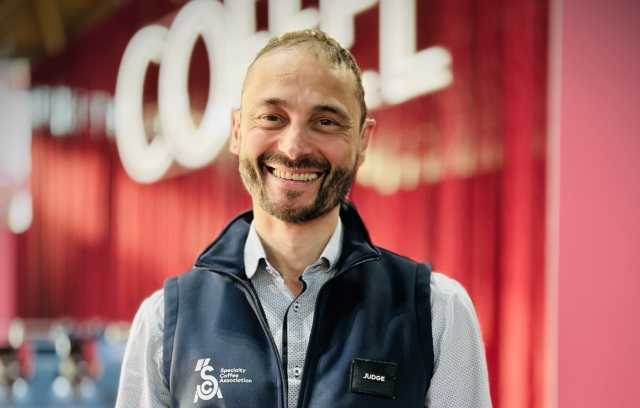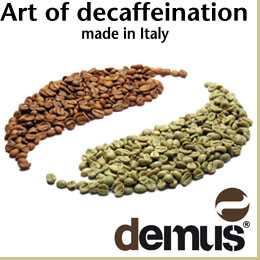Here is the complete speech that Alessandro Galtieri, brewers cup champion, author of highly appreciated manuals for Baristas and coffee lovers, judge, and certified SCA trainer, gave at the Sigep conference organized by Comunicaffè and Comunicaffe International at Vision Plaza on the crucial topic of sustainability, reflecting on some current issues such as the Regulation against deforestation (EUDR).
According to Galtieri, although this law aims to reduce the adverse effects of agriculture on the environment, it does not consider some complex dynamics of the supply chains.
“Millions of small farmers in developing countries,” continues Galtieri, “rely on coffee for their livelihood, and the regulations prescribed by the EUDR could be too complex for their implementation capabilities. Below are his considerations.
The future of coffee between environmental, social, and economic sustainability
by Alessandro Galtieri
RIMINI – “When Mario Vicentini from Comunicaffè invited me to take part in this conference about the future of coffee, it prompted me to consider the current state of affairs regarding the trends in a sector that is undergoing significant changes. As a result, I have decided to talk about the trend towards the aggregation of the actors that make up the various links in the coffee supply chain.
Although not a new trend, it is important to comprehend how it will shape the future of the coffee industry. Big companies are expanding at the cost of smaller ones, which are being absorbed or disappearing altogether. This creates an opportunity for the larger players to increase their control and influence over the market.
Starting from the first link in the chain, the producing countries, from a recent informative experience at NKG Bero Italia, I learned that currently, 74% of coffee production comes from only five countries: Brazil, Vietnam, Colombia, Indonesia, Honduras and India.
These countries are advantaged due to the large volumes of coffee they produce and move, which makes them increasingly competitive.
On the other hand, those less productive countries are struggling to maintain their market share. However, depending on a few large producers entails risks. For instance, the lower coffee production in Vietnam last year compared to forecasts highlighted how an unexpected event affecting a single country can impact the entire market.
The European Union has approved a new regulation against deforestation called EUDR.
EUDR requires that some agricultural products that are considered “at risk”, including coffee, can only be traded after it has been confirmed that they were not produced through deforestation. Although this law aims to reduce the negative impact of agriculture on the environment, it doesn’t consider the complex dynamics of the supply chains for these products.
Alessandro Galtieri, reflects that millions of small farmers in developing countries rely on coffee for their income, and the regulations prescribed by EUDR could be too complex for them to implement. He also points out that such regulations could have devastating effects on small producers who depend on coffee cultivation for their food security.
Interestingly, EUDR does not apply to soluble coffee, which is traditionally produced by large companies, even though it is a product that carries the risk of deforestation. The reasons for this exclusion are still unknown.Moving on to the next link in the chain, logistics, during the experience at NKG Bero Italia, I learned there is also a clear trend here towards reducing the number of operators in favor of larger ones.
>In the recent past, container availability was high. At times, charter rates had become so low that small companies could not withstand the competition from stronger companies, which further grew by absorbing their market shares.
The situation changed during the COVID-related restrictions. The blockade of ports in China led to a shortage of containers, causing prices to increase disproportionately. The few large companies that survived the competition before the pandemic were now dominant and could charge high prices.
Even now, with container distribution back to normal, prices remain high compared to the past. The limited number of operators in the industry has no interest in lowering prices since they have control over the market.
For symmetry, I conclude this overview with the last link in the chain; cafeterias, specifically small family businesses like my own café, Aroma, in Bologna. Compliance and financial burdens have increased significantly, which has led to a decline in profitability for these businesses.
The Italian café, the backbone model, proudly flaunted as a banner by all, which focuses on fast and personalized service, requires a large number of personnel, making it particularly vulnerable to rising costs.
For example, according to ministerial tables, a professional barista has an average hourly cost of over 19 euros.
For an Italian-style service, a “busy bar” requires 3-4 baristas per shift. The personnel cost in this scenario amounts to at least 50-60€ per hour.
Galtieri continues: “It is said that labour costs should not exceed 30% of turnover: so if I pay 50/60 euros for personnel, I should collect at least 150 euros on average in the same period.
A setup like the one described handles about 200 transactions daily, which on a 12-hour opening time is an average of 17 transactions. Now, the average receipt ranges between 3 and 5 euros, which means that revenues can reach 85€/hour; therefore, in the best-case scenario, labor costs account for at least 50%.
To understand the data, consider that a Mediobanca study shows that the industry’s labor costs currently amount to 8.4% in Italy.
If this trend persists, the small, honest, traditional Italian bar could disappear, giving way to large chains operating on widespread and minimal margins.
When even in this sector, there will be only a few large operators, it is easy to predict that by controlling the market, they will dictate the rules, and maybe we won’t like them.
Galtieri: “I would like to conclude that the future is only scary if we don’t work well in the present. I believe it is essential to find a balance between the competitiveness of large players and the protection of small businesses. Only through deep reflection and a real willingness to take charge of situations we can ensure a healthy and sustainable future for the beverage we love and its surrounding world.”




















